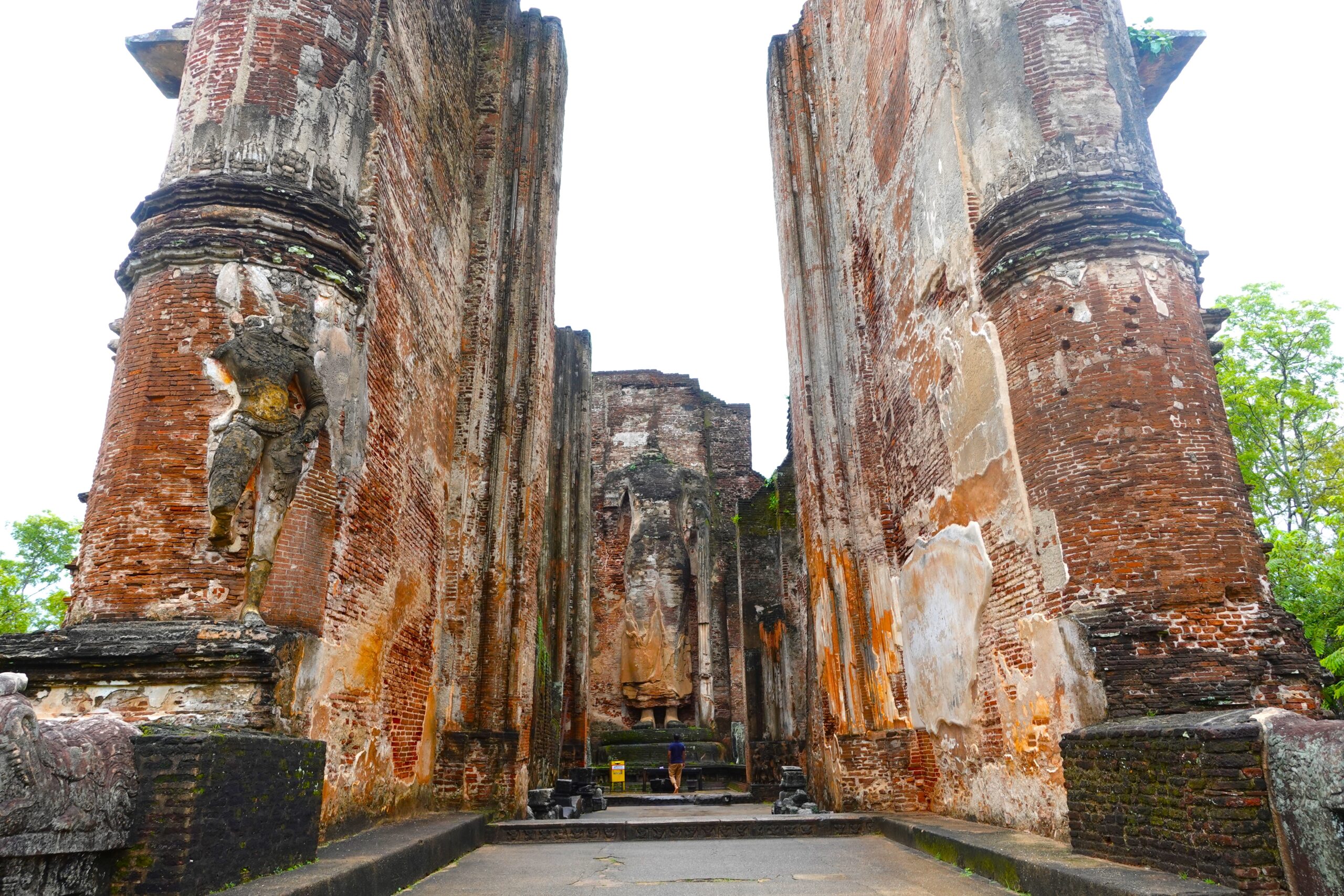Travels to Buddhist sites in India and Sri Lanka (38)
Impressed by the lost ancient city of Polonnaruwa's Buddha statues! Here are the highlights of Sri Lankan sculpture!
The day after visiting Dambulla, which was my "number one disappointing World Heritage Site," I headed for the ancient city of Polonnaruwa, a World Heritage Site.
I had been so disappointed in Dambulla that I thought, "Maybe Sri Lanka will continue like this until the end..." But rest assured, Polonnaruwa is different. But rest assured, Polonnaruwa was different in every way.
(32) A Brief History of Sri Lanka's Colonial Period: The Historical Background to the Emergence of the Dharmapala."As I told you in the article "The Chola Dynasty's Invasion of Anuradhapura," Polonnaruwa came to the forefront of history with the abandonment of the royal capital, Anuradhapura, by the Chola dynasty army in India.
The Chola dynasty established a base of Sri Lankan rule at Polonnaruwa, further from Anuradhapura, and ruled this area for a while. However, around 1055, Vijayabahu I took back the land, and the Sinhala dynasty once again ruled Sri Lanka. The Sinhala dynasty ruled Sri Lanka again. This was the beginning of the ancient Buddhist capital of Polonnaruwa.
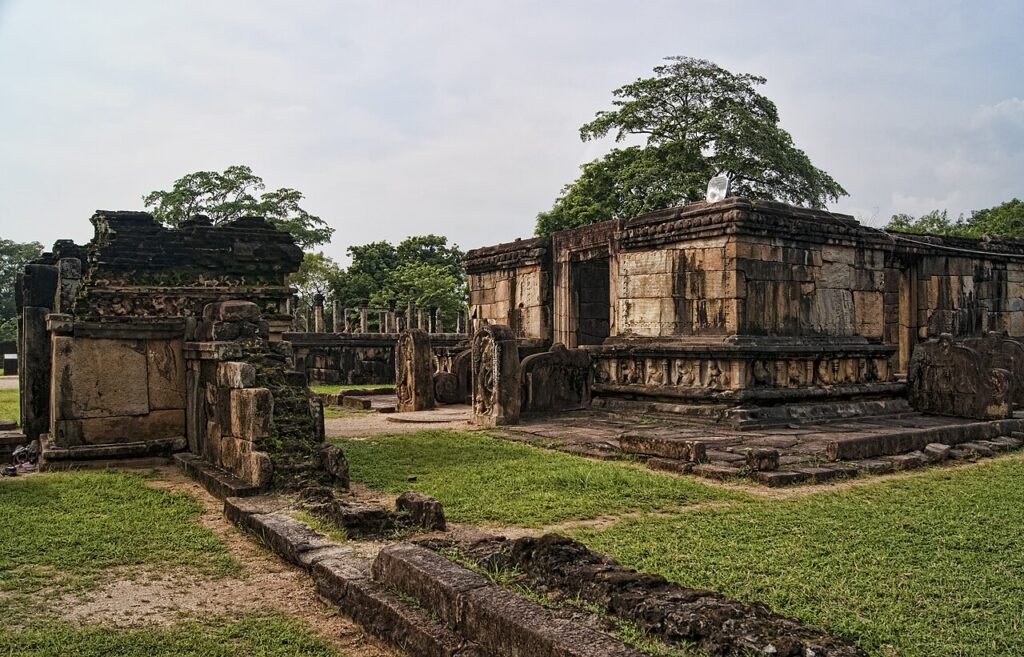
This period did not last long, however, and in 1255 Polonnaruwa had to be abandoned. Since then, this area, like Anuradhapura, became a jungle and was forgotten until it was discovered by the British in the 19th century.
and(34) Background of Sri Lanka's Civil War and Rapid Revival of Buddhist Sacred Sites: The Relationship between Sinhala Buddhist Nationalism and Sacred Sites."As I mentioned in the article "The Sacred Site of the Buddha," Polonnaruwa is another Buddhist site that has been rapidly transformed into a sacred site through the Sinhala-only policy. This site, which had been buried in the jungle and abandoned, is now being illuminated as a sacred site and tourist attraction.
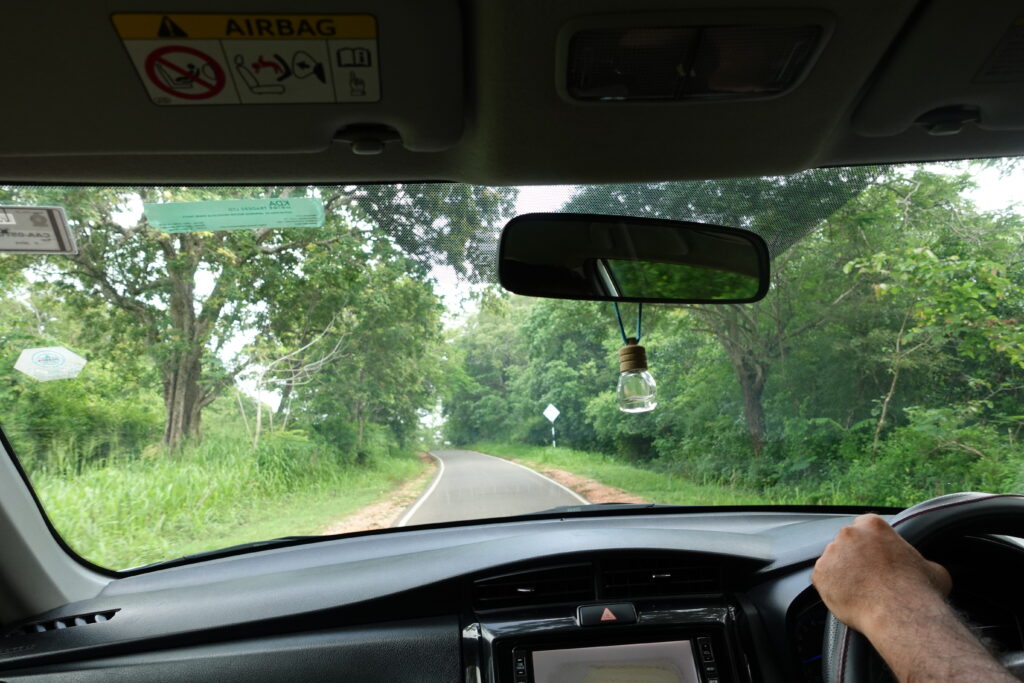
Well, we're off again today.
As you can see, this area is so deep green that it could be described as a jungle. These powerful plants have completely covered the ruins.
And finally I met "that animal".

Yes! It is a wild elephant!
The guide had told us that it would come out, and it really did!
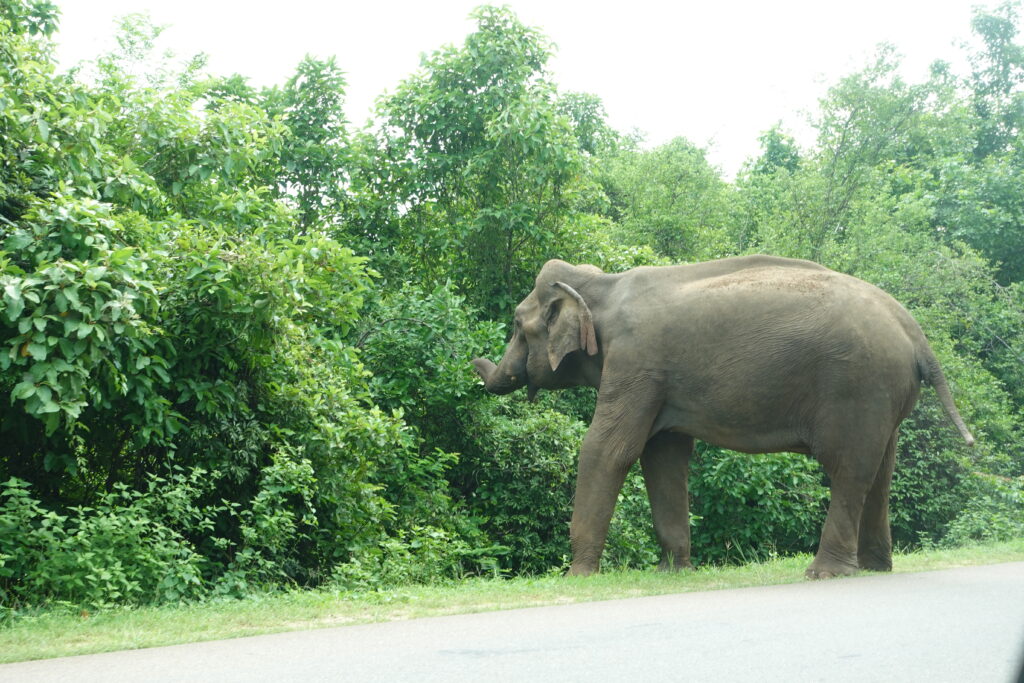
To be honest, it is scary to see such a big elephant "out in the open". If such an elephant came to my yard, I would not be able to stand it. In fact, it is said that there are casualties every year in Sri Lanka.
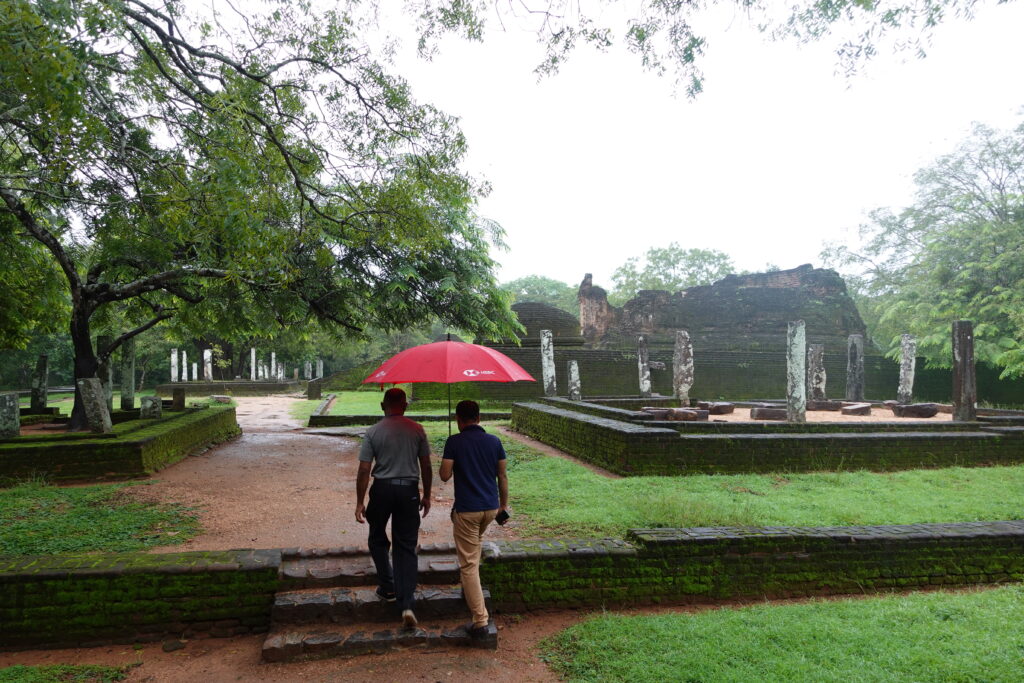
Now, we have arrived at the archaeological site of Polonnaruwa.
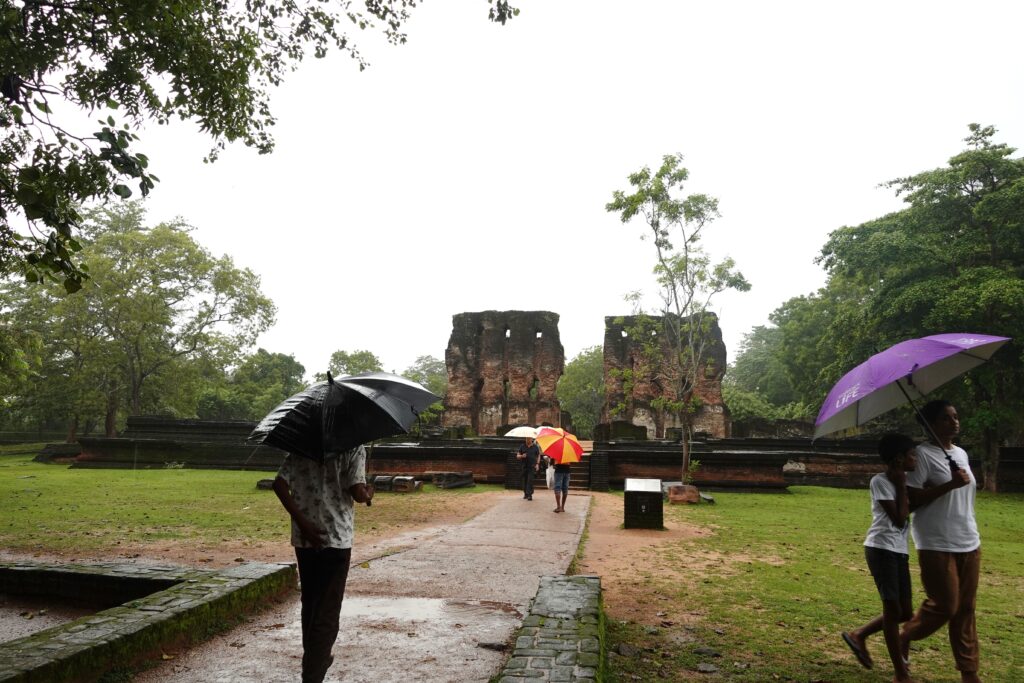
These are the ruins of the royal palace. From a distance, it did not look that big, but as I got closer, I was surprised.
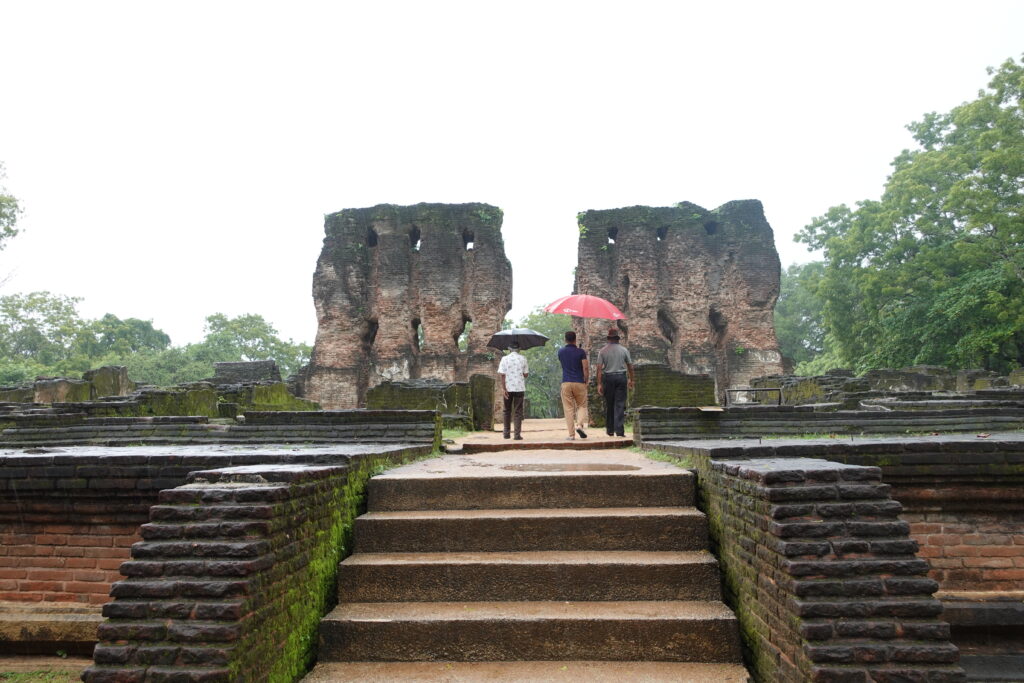
It is unexpectedly powerful! After all, it is huge!
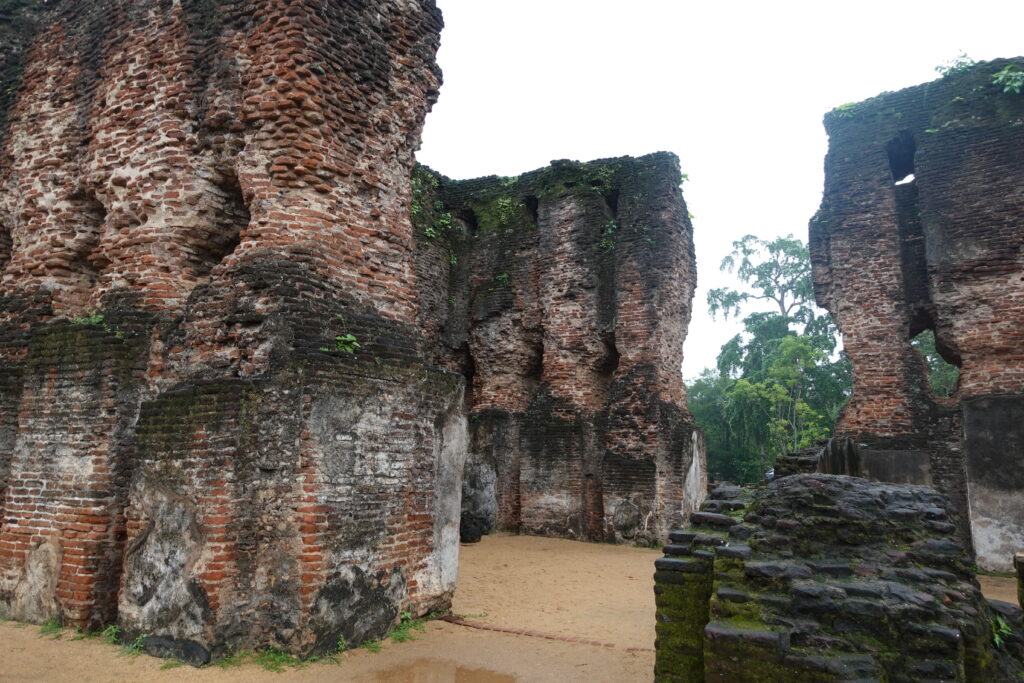
Today, only three floors of columns remain, but it is said that the palace once had seven floors! If there were seven floors at this size, it would no longer be an unbelievably huge palace. It looks like ancient Roman architecture. It is evident that the national power during the heyday of the Polonnaruwa period was considerable.
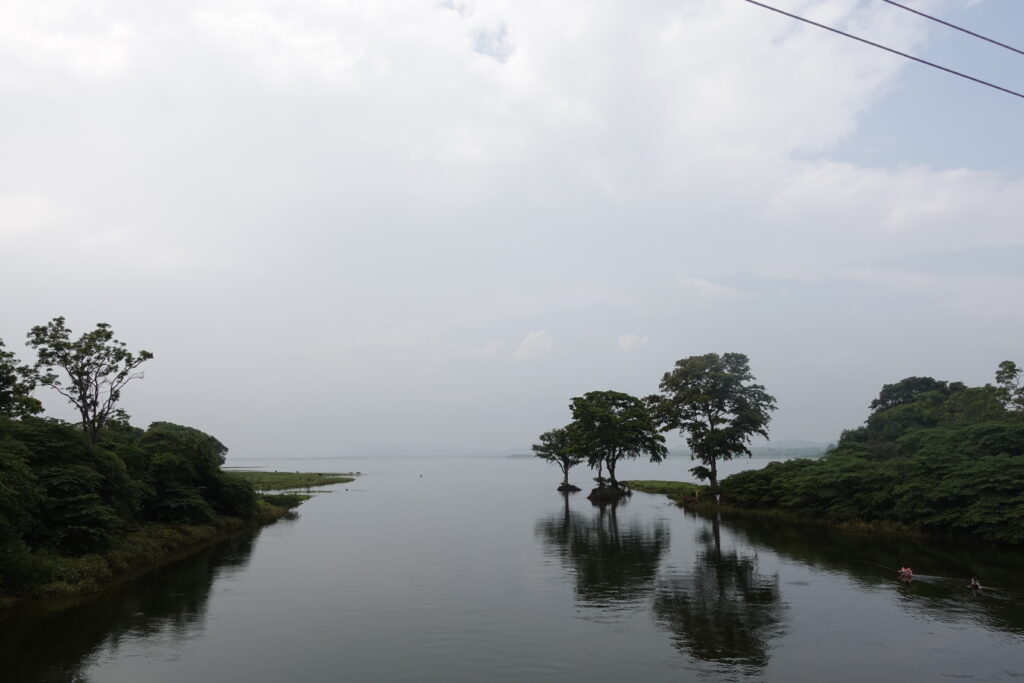
In fact, there is a huge man-made lake in Polonnaruwa, which was maintained by this dynasty. In a dry zone where water is scarce, this kind of flood control technology is indispensable. To carry out such a huge flood control project requires advanced technology and the mobilization of a huge labor force. In order to do so, a strong royal power must be in place. Conversely, a strong royal authority is what makes such a large project possible. For more information on the advanced flood control technology of ancient Sri Lanka, which remains a mystery to this day, please refer to the book by Naoshi Nakamura.An Introduction to the Study of Water Use in Sri Lanka.is a very interesting book and I highly recommend it.
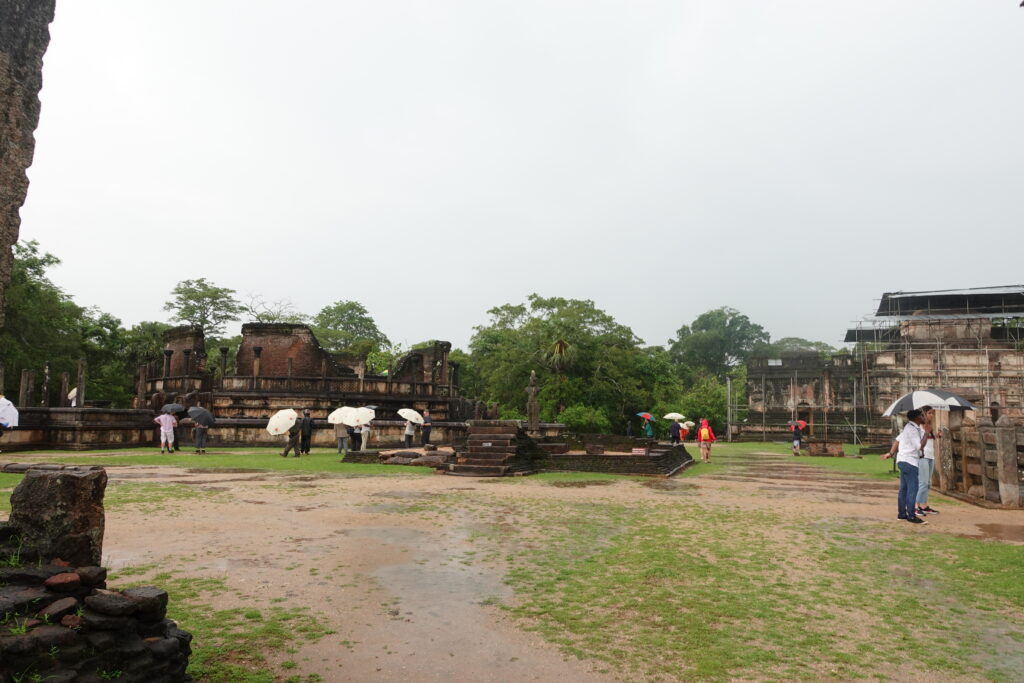
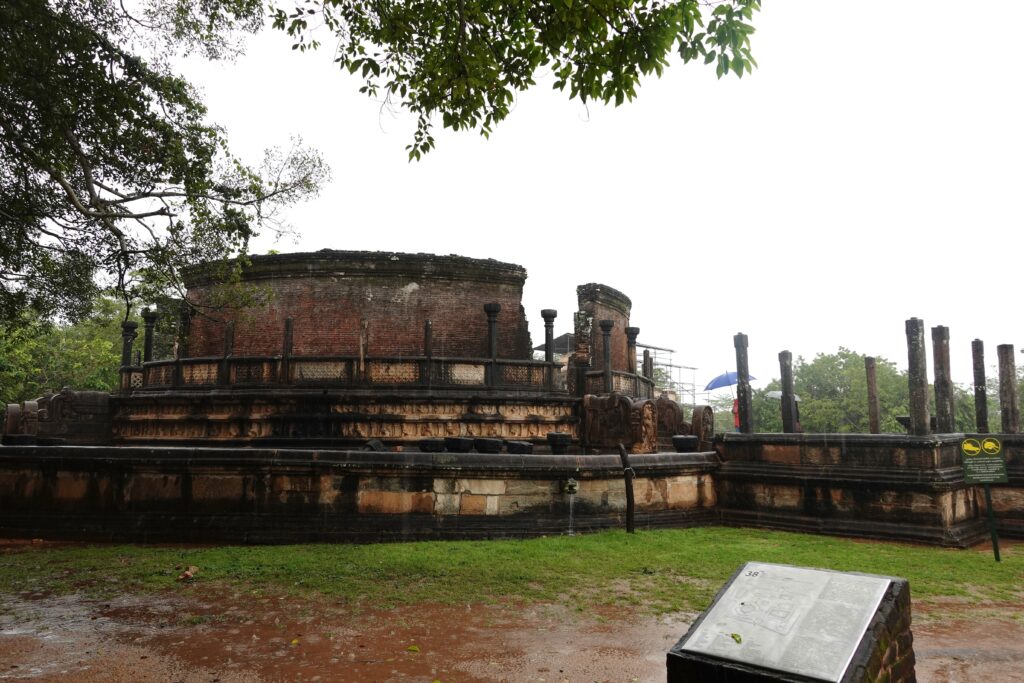
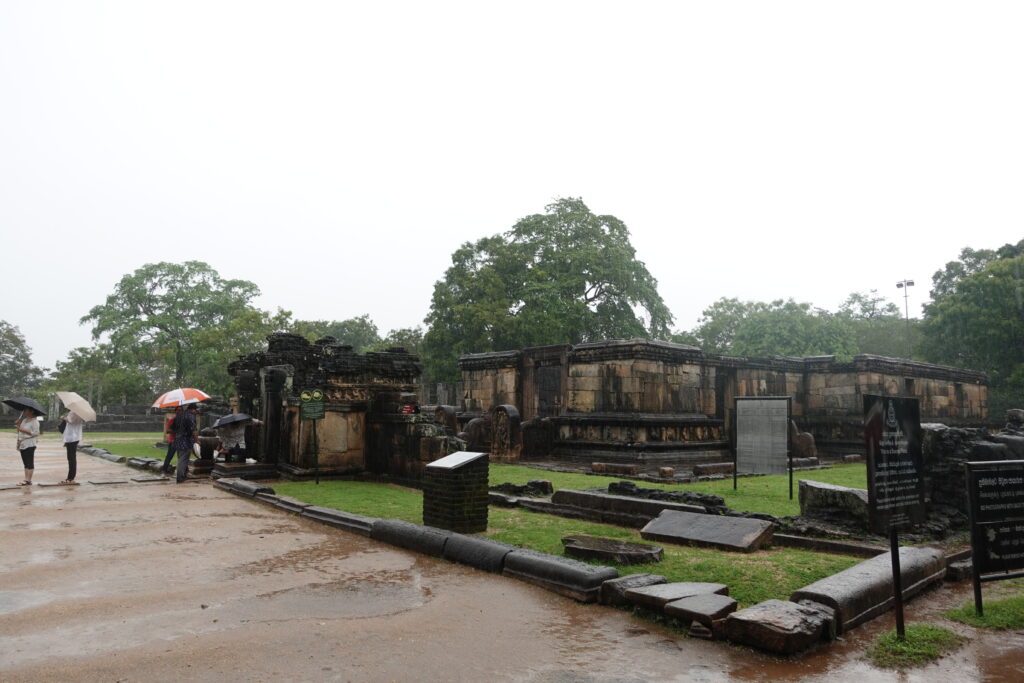
After this I continued walking through the ruins of Polonnaruwa.
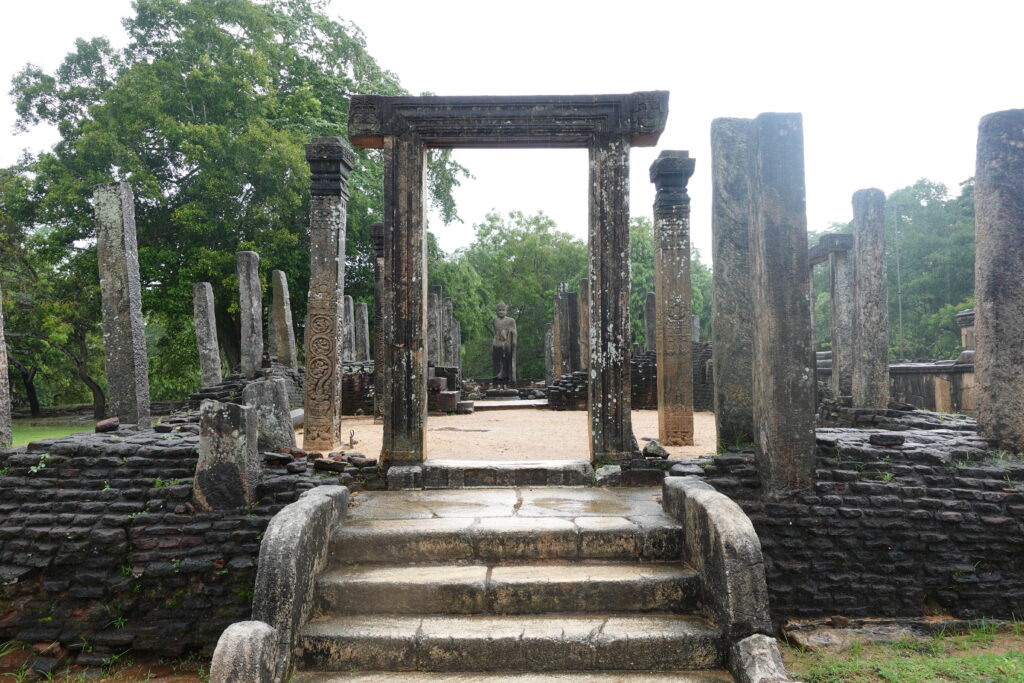
There are many more photos I would like to show you, but I would like to introduce the ruins of the next Buddhist temple, Lankatilaka.
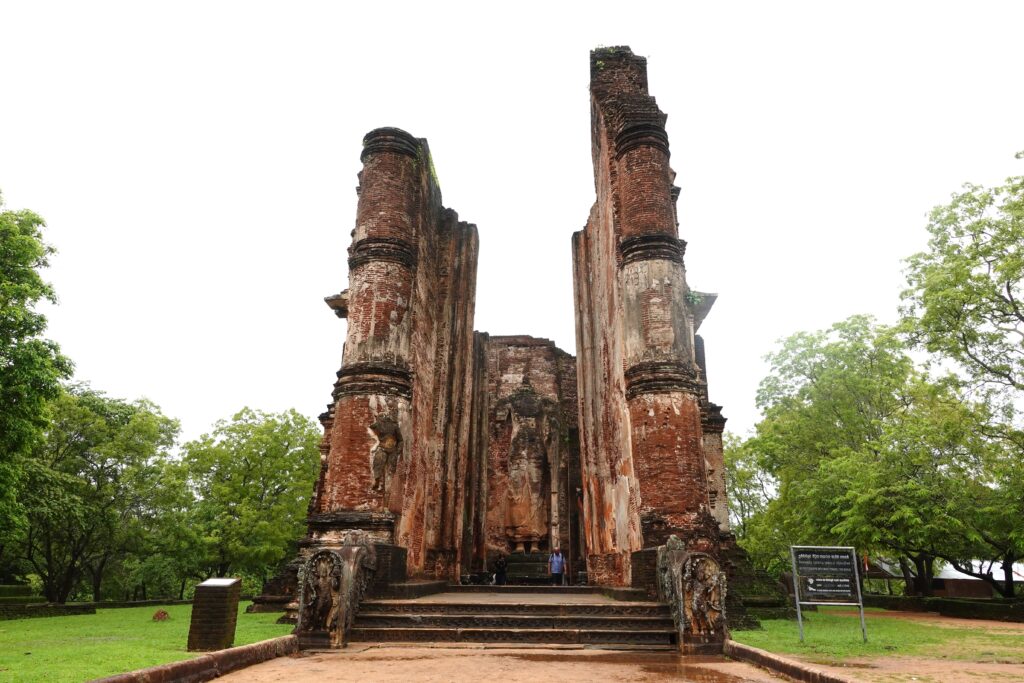
I was instantly drawn in by this huge structure that suddenly appeared within the spacious precincts of the temple. I saw a brown Buddha statue stretched out smoothly from the sharp form that stretched vertically. This is wonderful!
What a beauty. It was the very moment that my morning anxiety was blown away. I can't stop the goosebumps.
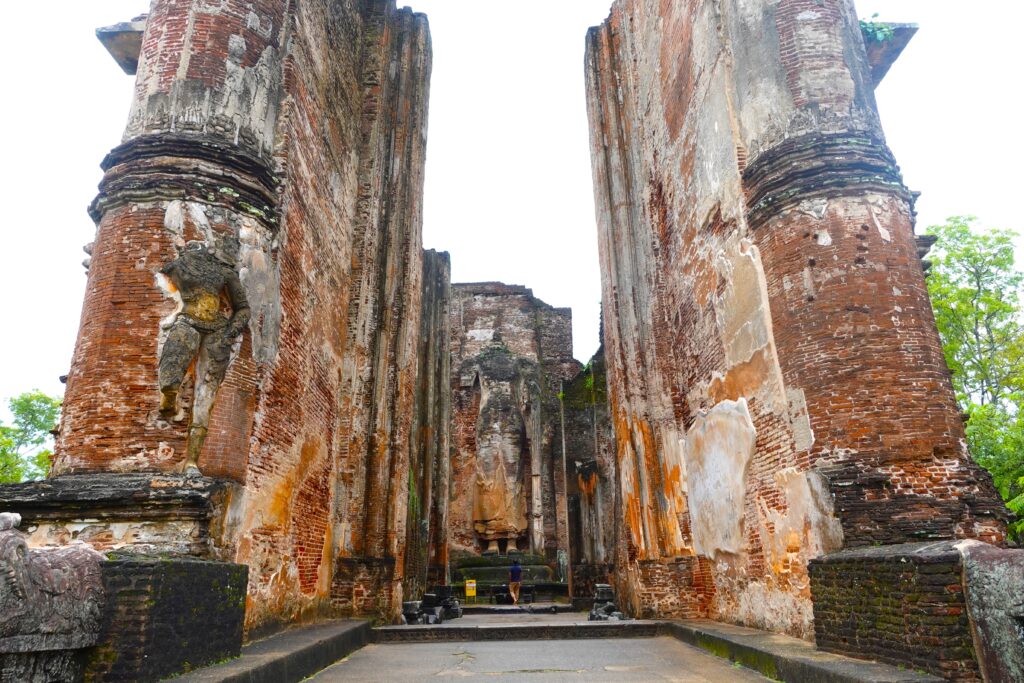
It is very powerful when you see it up close.
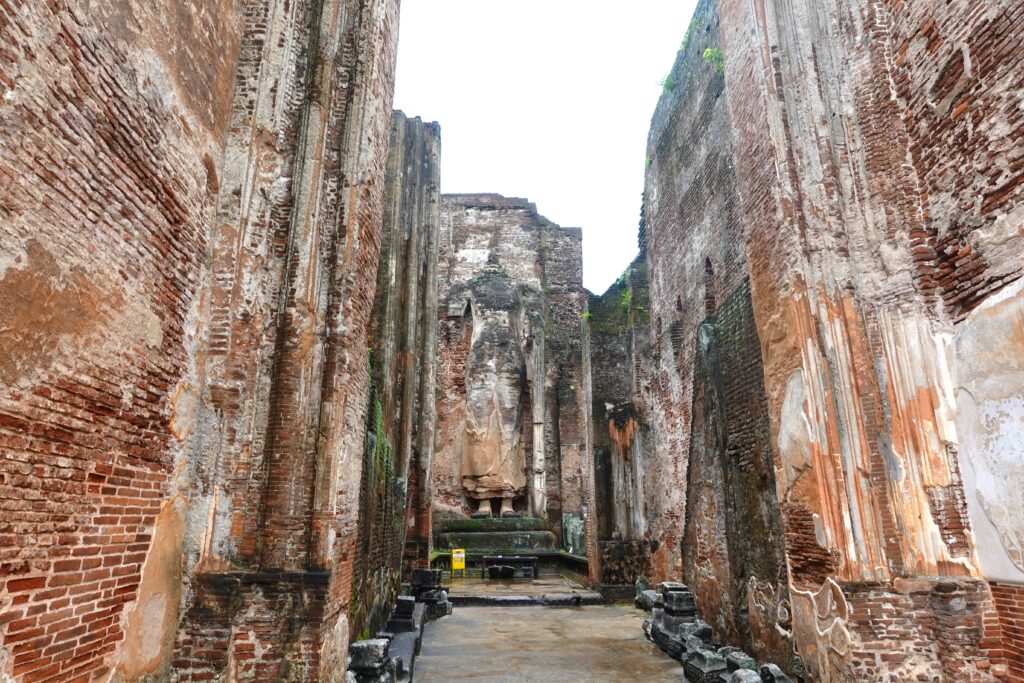
Once inside, I felt as if I were in a precipitous valley. Cut off from the outside world, I felt as if I were in a different space. The closer I got to the Buddha image step by step, the more excited I became. This is amazing.
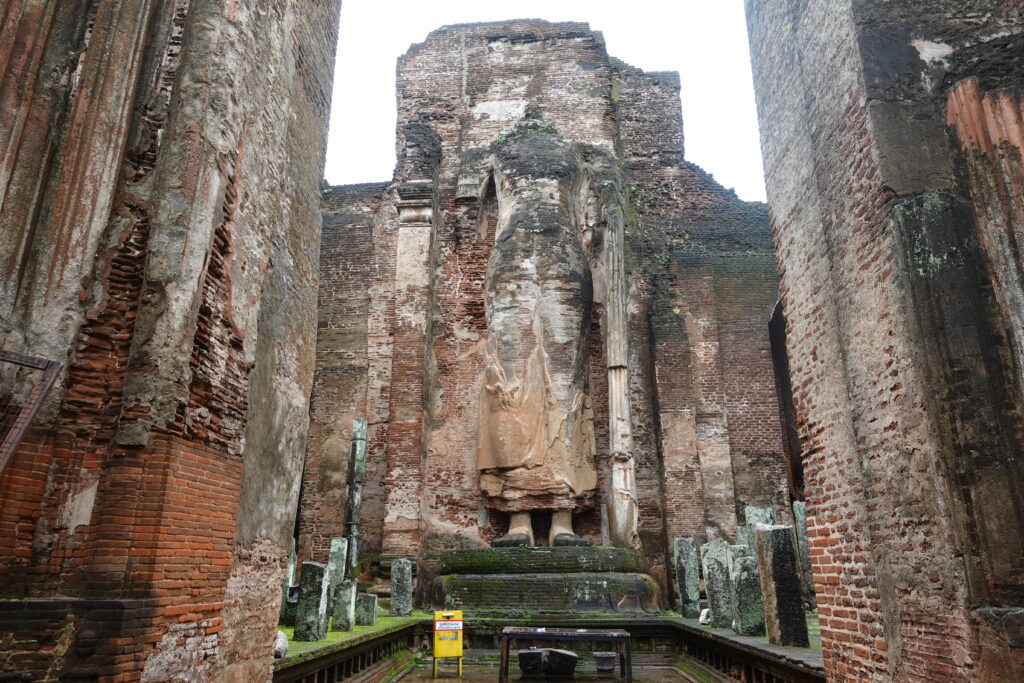
And this Buddha statue itself was amazing! This is the best of my stay in Sri Lanka.
The head is severely damaged and missing, but this gives it an air of mystery.
I'm open to sculptures without heads. After all, I love the Nike of Samothrace. I was also impressed by the statue of the nymph of Khajuraho. There is an "aesthetics of the missing. There is a beauty that stands out precisely because it is missing.
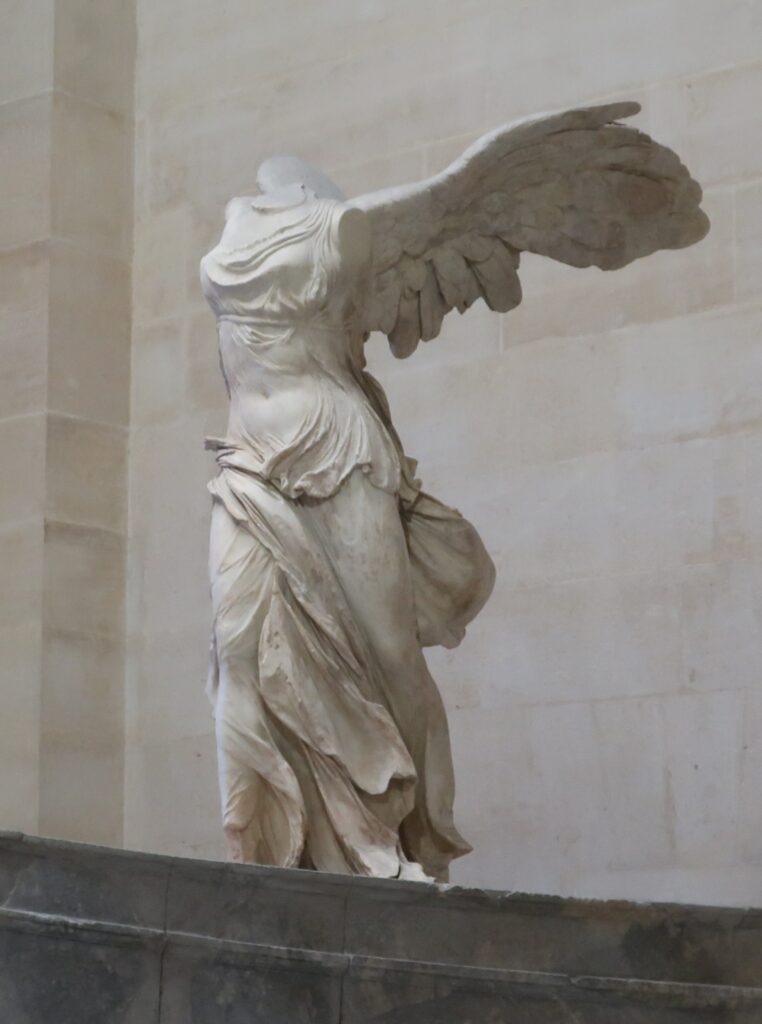
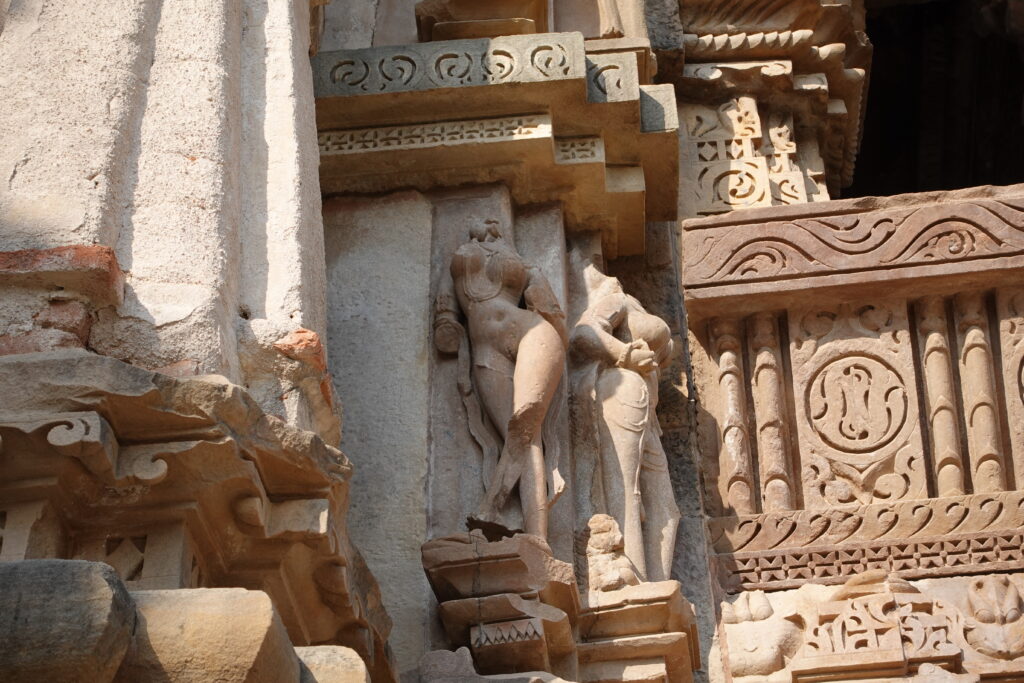
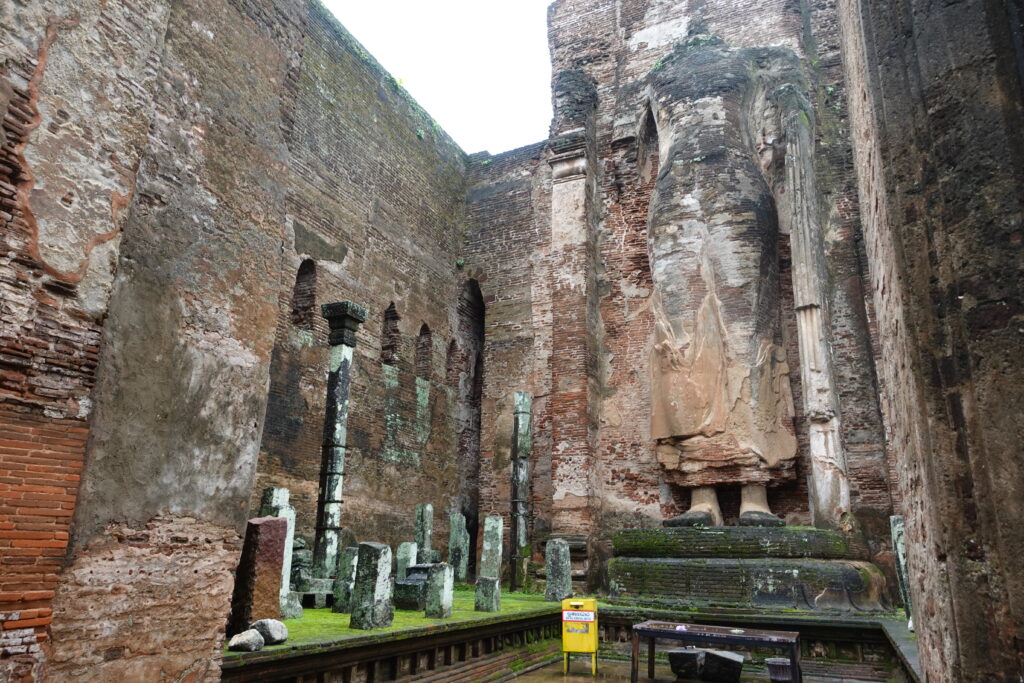
The feet of the Buddha images are also mossy and tasteful. It must be like this!
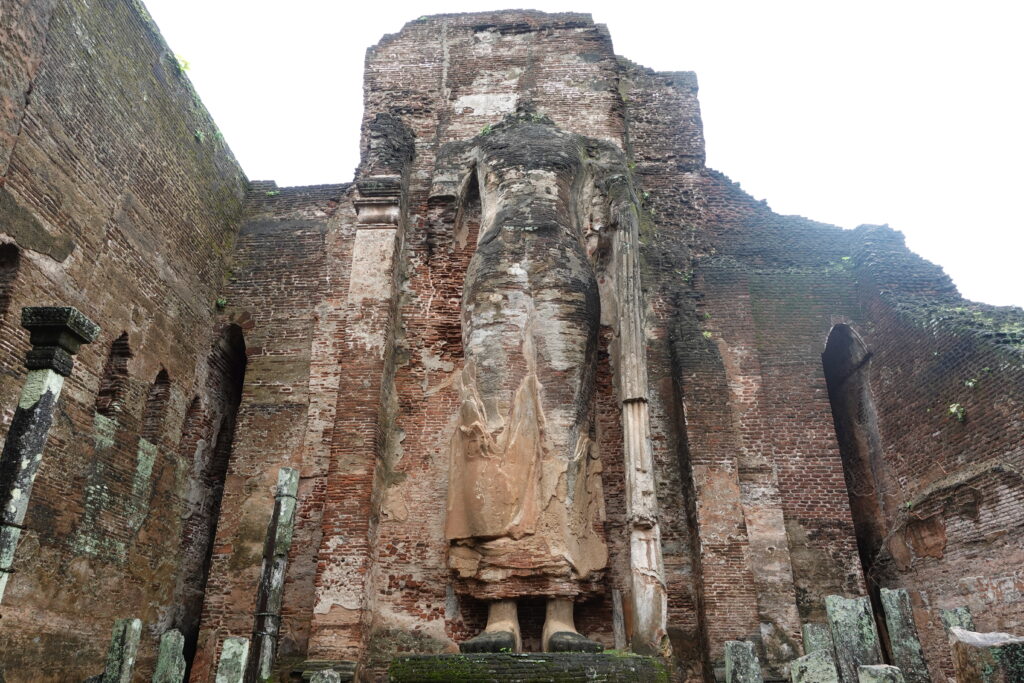
But still beautiful...
The lines of her body, stretched out smoothly and gracefully, are truly graceful. The slight hem of the robe at her feet also stirs the imagination.
And what is striking is these thighs. I wonder if this reflects the physique of the Sri Lankan people, an agrarian people rooted in the earth. The strength of the waist and thighs left a particularly strong impression on me.
It is truly a shame to leave this place. It is truly a different space. I had a wonderful time here.
Incidentally, a painting of Lanka Thilaka at the time of its discovery was on display at the National Museum of Colombo, which I visited later.
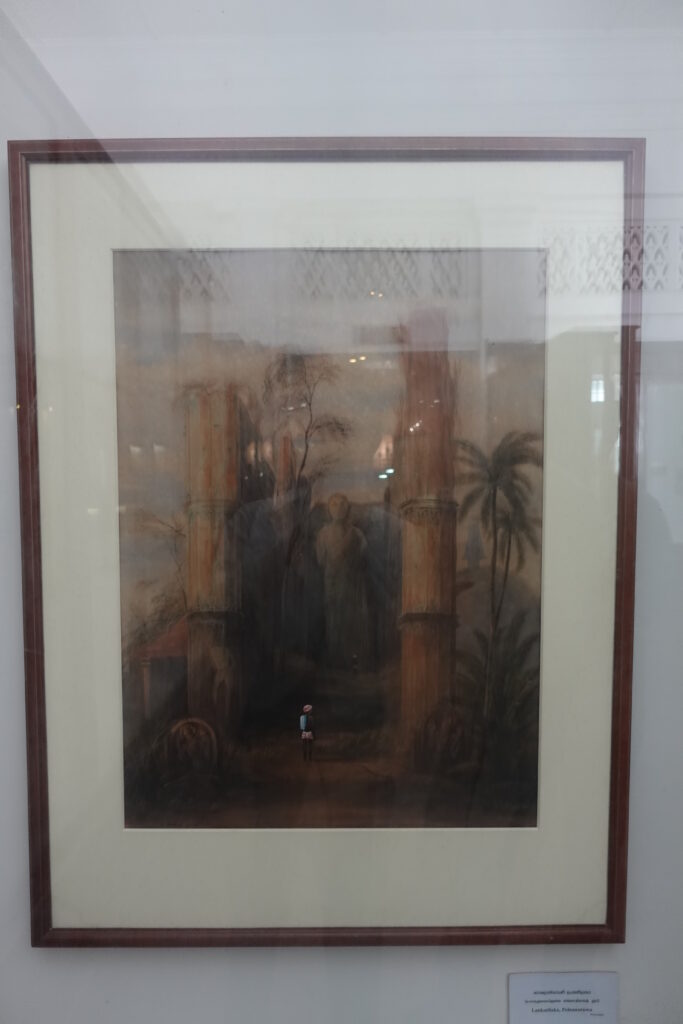
It must have been a true atmosphere of an ancient ruin nestled in the jungle. One can only imagine the surprise of the discoverers.
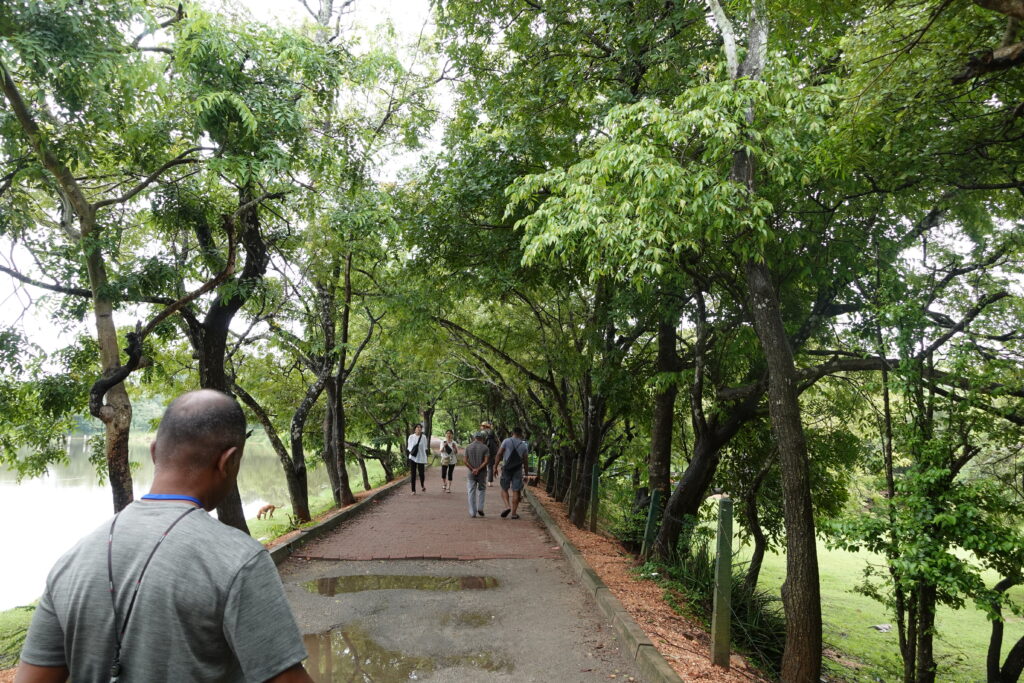
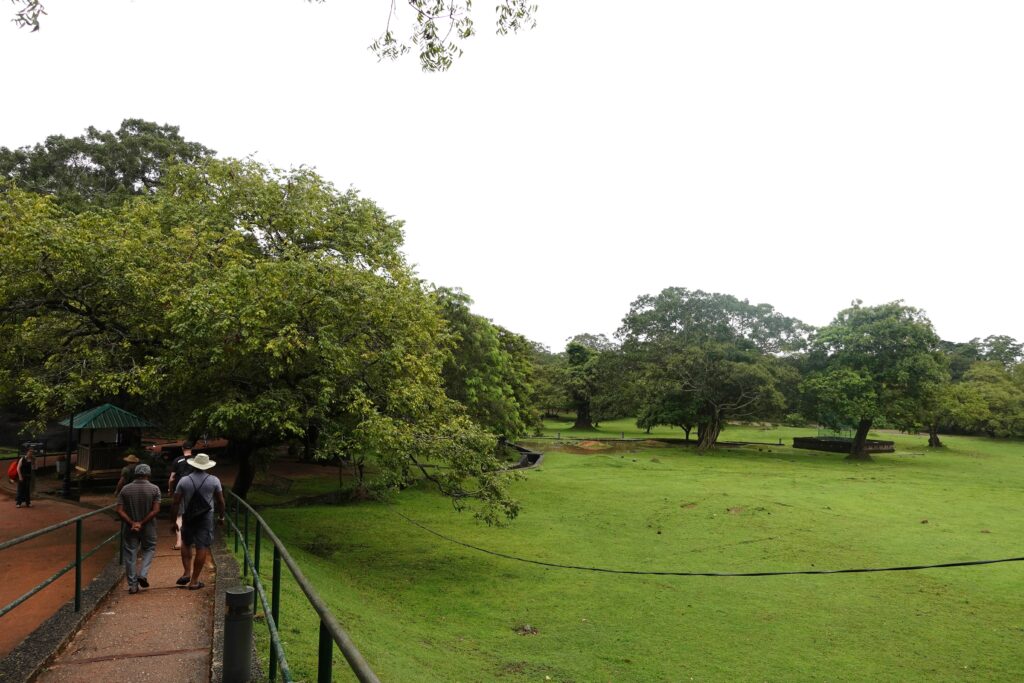
Next, I would like to introduce a place called Galle Vihara, which is so famous that people say, "Polonnaruwa is here! is a place called Galle Vihara, which is so famous that people say, "When you think of Polonnaruwa, this is the place! Written by Kayoko KusumotoThe Wonder of Sri Lanka's Giant Buddha.According to the "Sri Lankan people give the Galle Vihara Temple as the place they most want to show to foreigners.
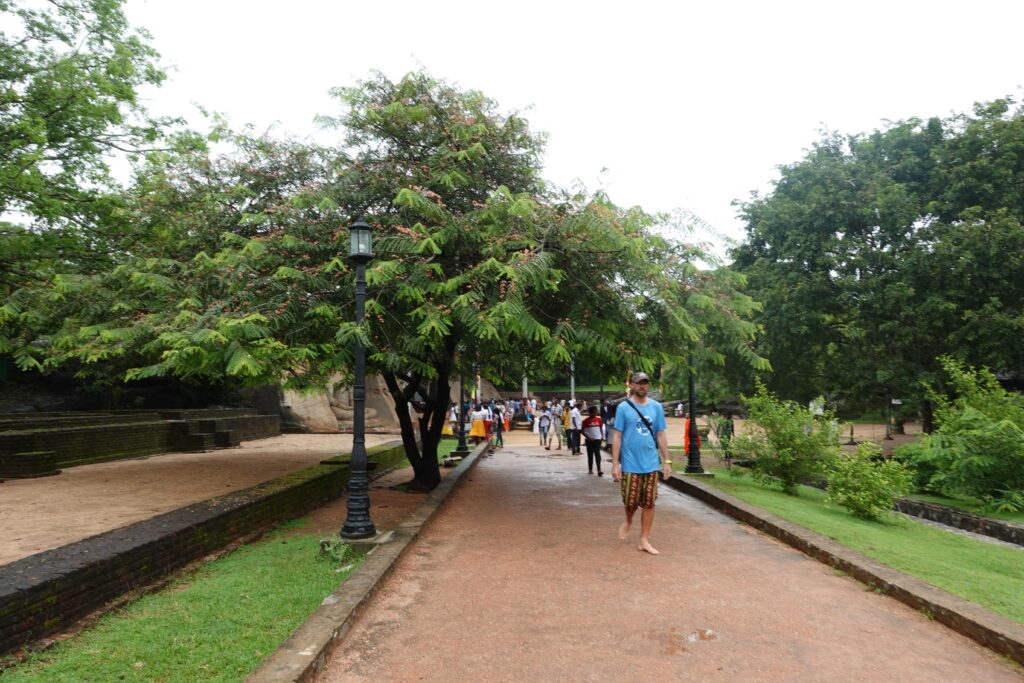
Here are four masterpieces of Sri Lanka's masterpiece, the Giant Buddha, created in the 12th century.
We will soon arrive at the Gar Vihara. We can already see the seated Buddha statue at the very front.
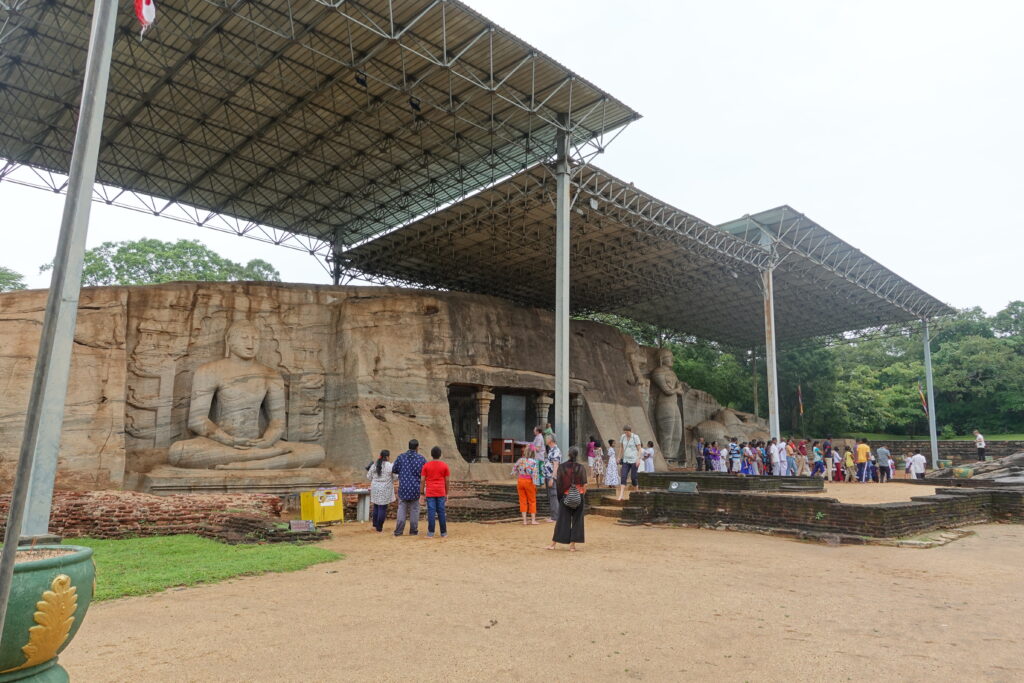
This is spectacular..! Just as I had read in the book, there are really four large Buddha statues carved out of a horizontal monolith!
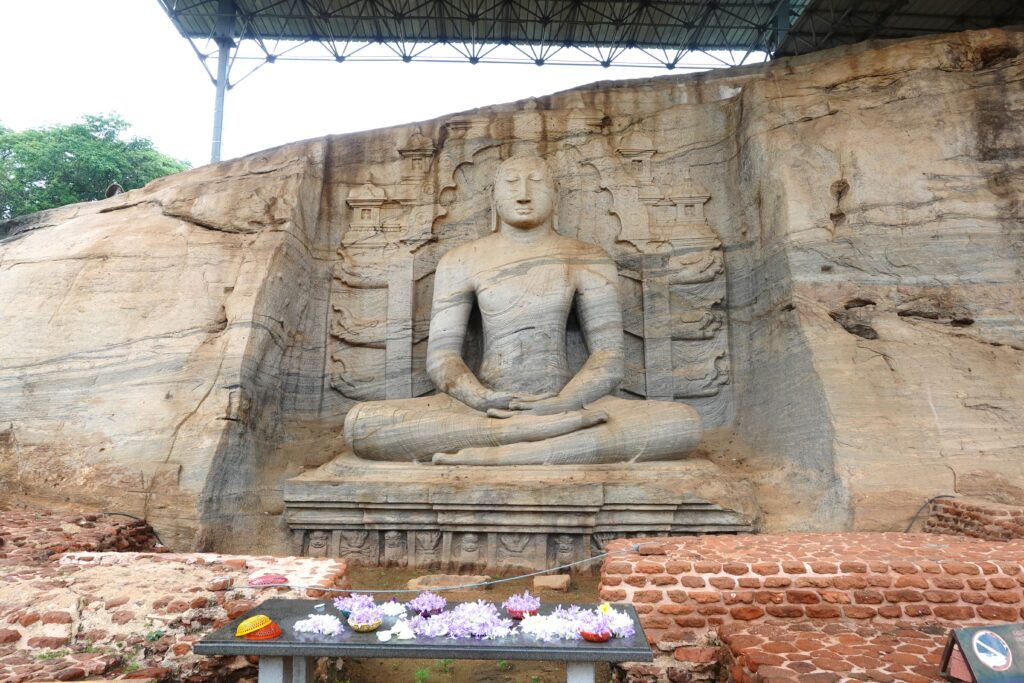
Let us start with the seated Buddha at the very front. The horizontal lines appear to be the very pattern of the rock itself. This beautiful Buddha was created from a single piece of pure rock. It looks as if it is one with the rock.
Her tightly folded legs give her a sense of exquisite balance and immense sturdiness. The inverted triangle from the shoulders to the lower abdomen is also very beautiful. It is a wonderful Buddha image that combines strength and graceful serenity. The expression of the statue's face is also suggestive of the clear state of meditation, which seems to cleanse the heart of those who are looking at it. What a quiet and serene statue.
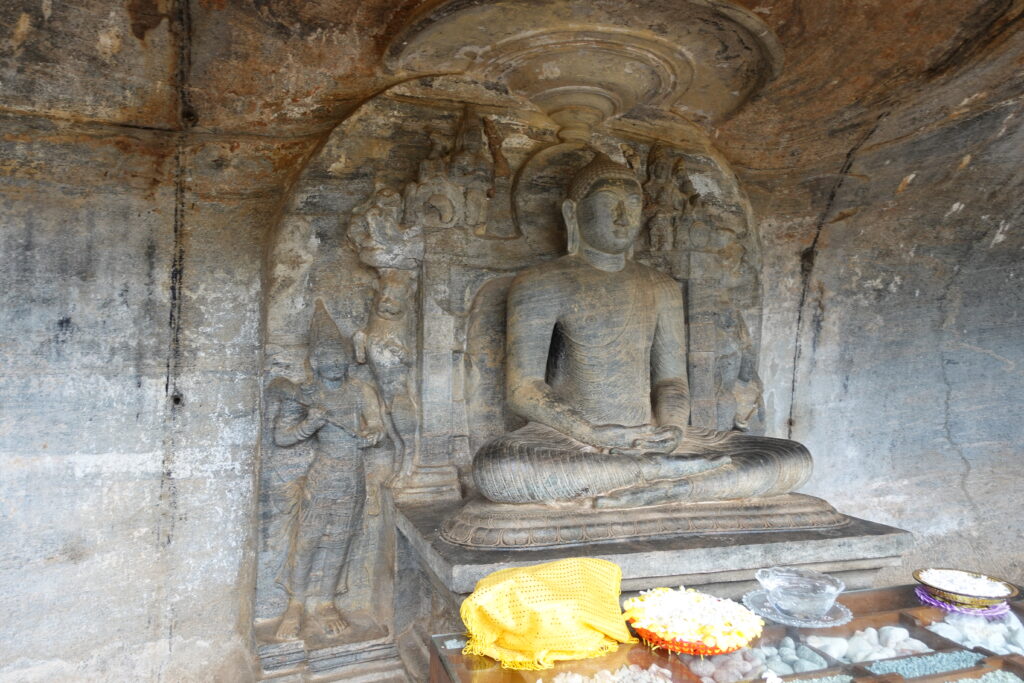
The second Buddha image from the front is different from the others. Only here, the stonework has been dug like a cave, and a smaller Buddha image has been carved at the back of the cave. According to Mr. Kusumoto, the face of this Buddha image is clearly different from the other three, suggesting that it was created by a different stonecutter from the one who worked on those three images.
According to Mr. Kusumoto, this seated statue is one of the highest level among Sri Lankan Buddhist statues. Indeed, the balance and the power of the arms are clearly of a different level.
But Gal Vihara is still the next big Buddha.
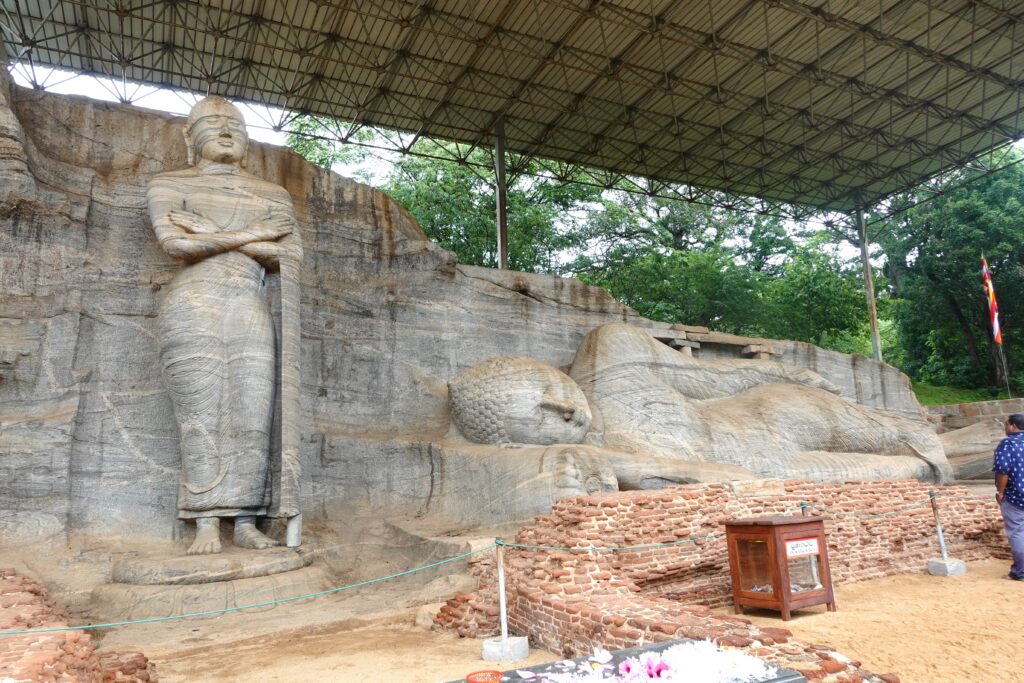
These two images are so famous that they can be said to be the symbolic Buddha images of Polonnaruwa, or even of Sri Lanka.
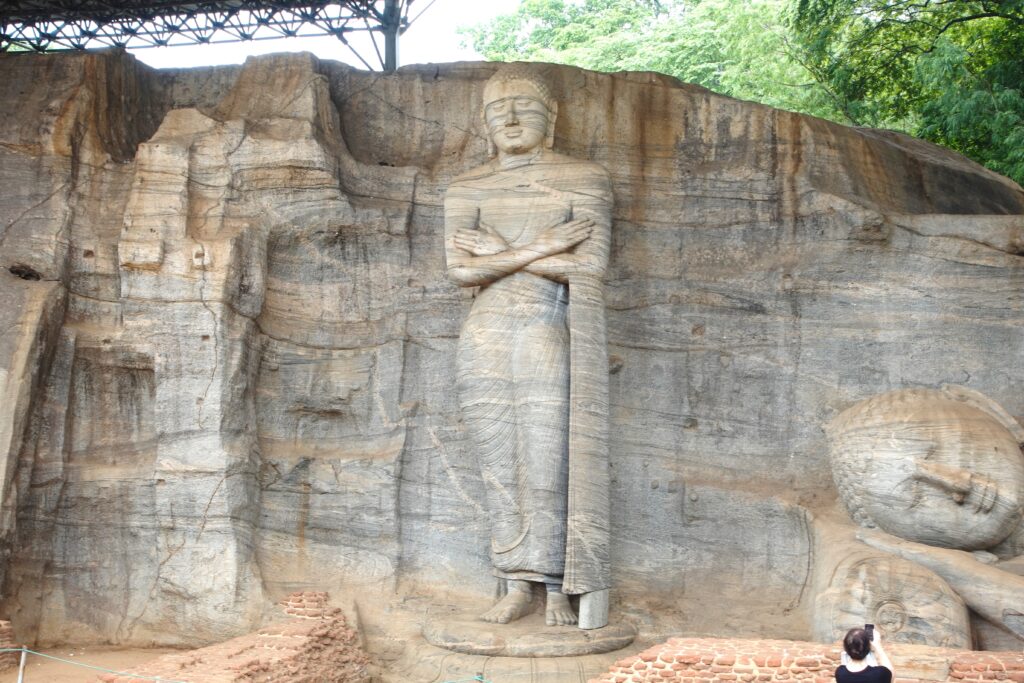
This standing image in particular, along with the Lanka Tilaka mentioned earlier, was one of the most impressive Buddha images I saw in Sri Lanka.
The quality of this Buddha image is outstanding.
There is graceful movement.
And this Buddha statue also has a slender style but with a powerful thigh.
And above all, it was the expression on his face! I could not take my eyes off this Buddha image.
High artistry can appeal to people universally. It goes beyond the "context of life" of each individual.
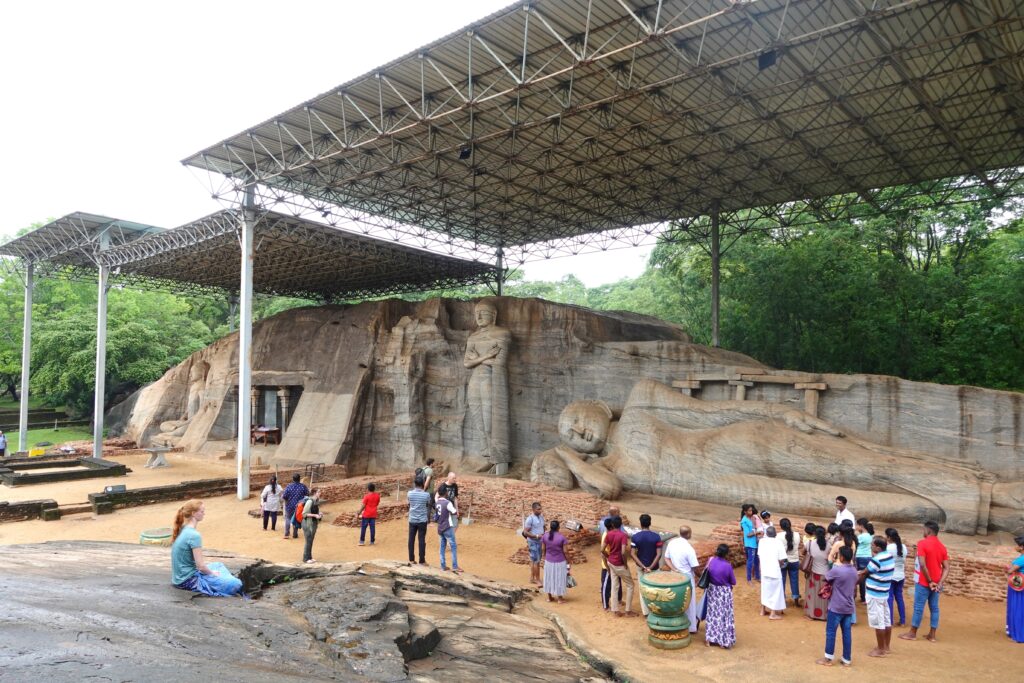
This standing Buddha image has an interesting story. In Sri Lanka, this statue was once believed to be Ananda, who was saddened by Buddha's death. However, research and studies from various viewpoints have now been conducted, and it is now academically proven that this is not Arnanda.
It is interesting to note, however, that this Buddha image was once believed to be Ananda and had a great influence on the Sri Lankan psyche.
This is the famous work of Ediliweera Saratchandra, one of Sri Lanka's leading writersTomorrow won't be so dark."It was also mentioned in According to this novel, not only this standing statue but even the first seated statue was considered to be Ananda. This was a strong impression on me even before I came to Sri Lanka. I would like to introduce the part of the statue.
Wasn't Monk Ananda a man whose mind was occupied only with the affairs of this life? What fire of sorrow must have burned in his heart at the separation from the Buddha? The tears streaming from the eyes of the statue were a wonderful sight. The doctor was impressed by the skill of the stonemason who created it.
Nan-un-do, Edirivila Saratchandra, translated by Padma Ratanayaka and Reiko Nakamura, "Tomorrow is not so dark," p.116-117
How much more palatable it would be if you thought of the seated statue as an Ananda statue. I can imagine every moment of sorrow as described in the scriptures. Where else can you find a statue that so well represents that moment? It is now a memory, but I once came to Gal Vihara and looked at this statue in the same way I do now. At that time there were many worshippers. One of them suddenly started crying loudly and said, "O monk Ananda! Why did you come to our Buddha at that time? Why didn't you ask our Buddha at that time to live another kalpaya (about 4.32 billion years)? What a trivial thing you did. If you had not died then, we would have seen the Buddha and gone to paradise. ......
Nan-un-do, Edirivila Saratchandra, translated by Padma Ratanayaka and Reiko Nakamura, "Tomorrow is not so dark," p.118-119
Saratchandra describes the way Sri Lankans used to feel this way.
Well, this is interesting. The creator of the Buddha statue did indeed carve Buddha, but the later Sri Lankans were moved by the idea that this was Arnanda, who had preceded the revered Buddha. However, Sri Lankans of later generations were moved by the image of Ananda, who preceded the revered Buddha.
This episode reminds us that "what to believe" is a very complex and diverse development.
The essence of the novel lies in the struggle between students steeped in Marxist ideology and their attempts to thoroughly destroy such traditional ideas. Although I did not include it in the above quote, I consider the scene at the ghar vihara to be one of the most iconic scenes in the novel. To learn more about Sri Lanka, please read this book.Tomorrow won't be so dark."I would recommend a novel called
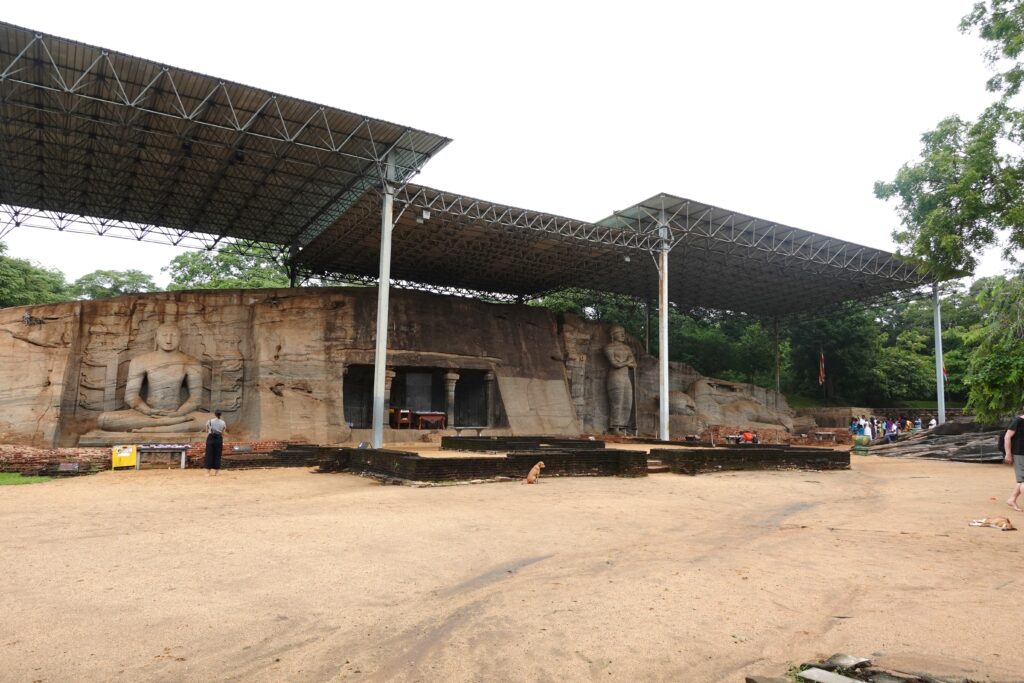
This gul vihara was truly a wonderful place. Polonnaruwa, very nice! I would highly recommend this Buddhist site.
I was extremely sad to change this place after Lankatilaka. How many times have I looked back and looked back? It was such a wonderful place.
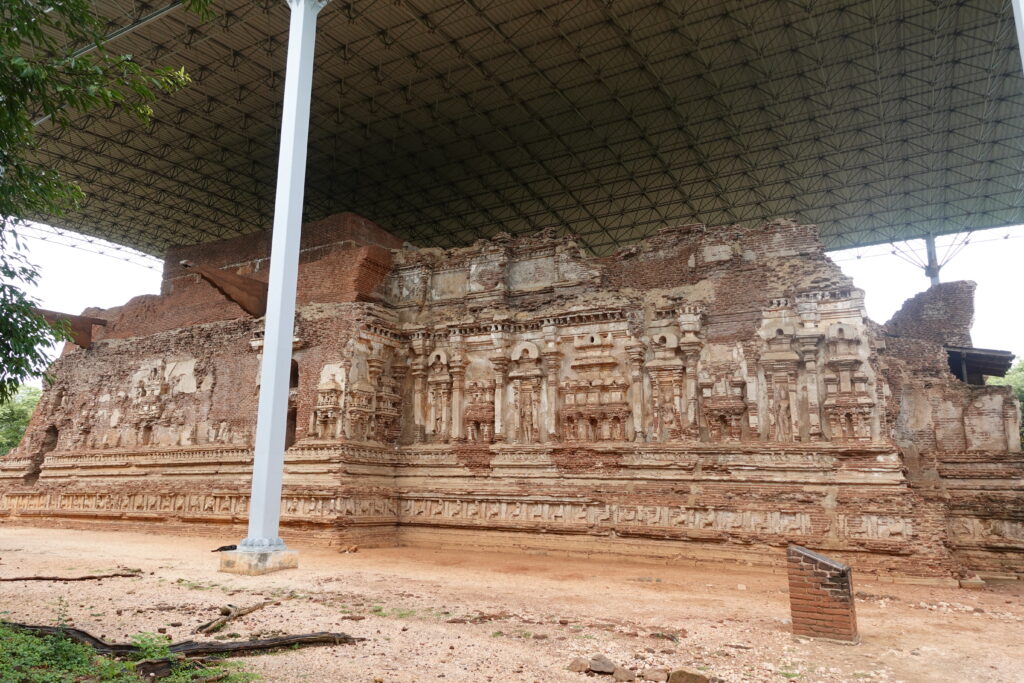
Still, I was surprised at the high level of art in Polonnaruwa. The large Buddha statue at the Tiwanka Pirimage Temple, which I visited later, was also overwhelmingly magnificent. I regret that I cannot report on the interior of the temple because photography is prohibited, but the body of the statue reminded me of the Buddhist statues in the Hokkedo Hall of Todaiji Temple in Japan.
After all, there is something different about Polonnaruwa.
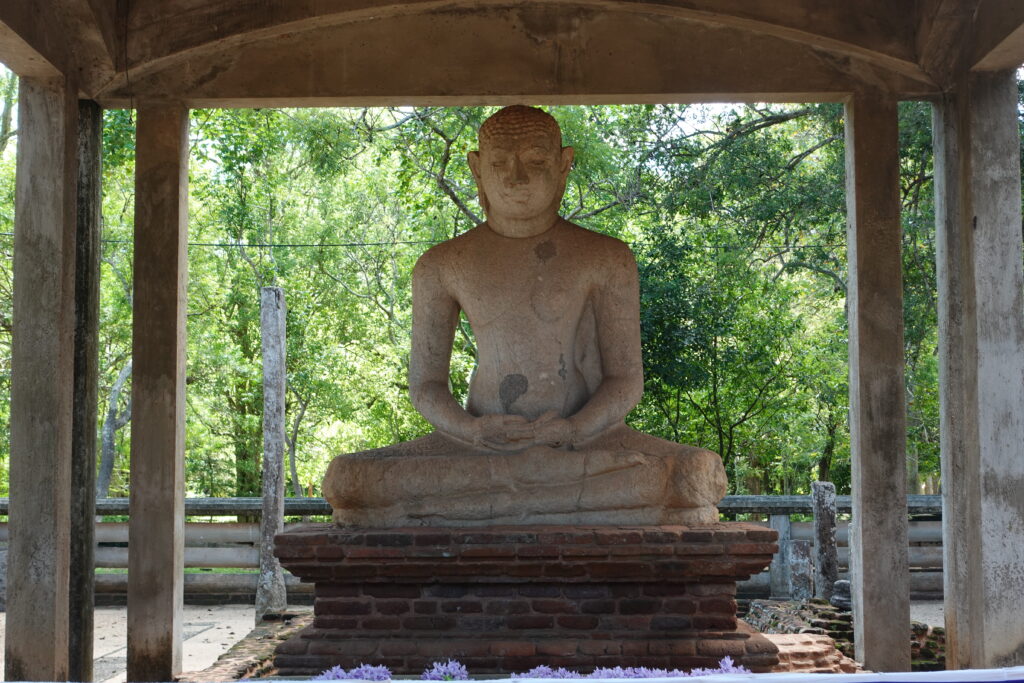
Aside from this Buddha image, which was highly praised by the Indian Nehru, there were various sculptures left behind in Anuradhapura, but Polonnaruwa is clearly on a different level compared to them.
Why is polonnaruwa so different?
Perhaps this is because the superior culture of the Chola dynasty in India entered Sri Lanka.
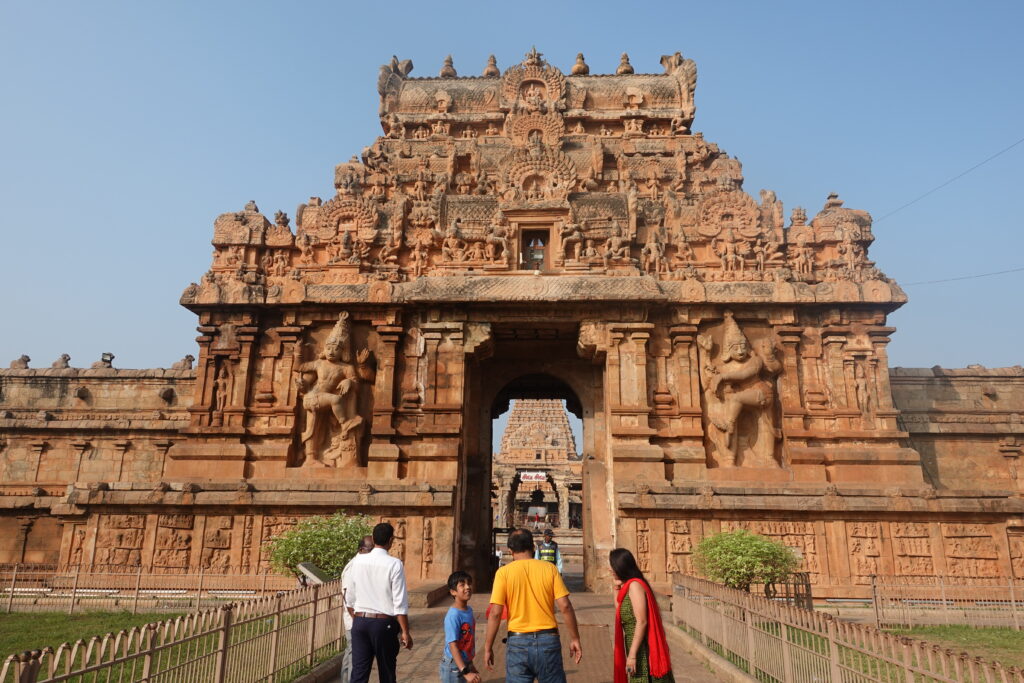
The mightiness of the Chola dynasty was, to say the least, half the story. It was a great country on an overwhelming scale. I visited Thanjapur, the capital of the Chola Dynasty, after this visit, and was astonished by the enormity of the Chola Dynasty and the exquisiteness of its technology. If such a country invaded us, we would not stand a chance.
The Chola dynasty had a stronghold in Polonnaruwa for a while. Many Hindu temples of the Shiva school were built there. The construction of temples means that various carving techniques must have been introduced to the area.
This is how the excellent Indian culture came to Sri Lanka. The combination of this excellent culture and the Sri Lankan style must have produced this wonderful Polonnaruwa sculpture.
This is just my guess, but I often thought "I knew it" when I visited the National Museum of Colombo at the end of this trip.
It was in the Polonnaruwa period exhibit room that many of the best Hindu sculptures were displayed.

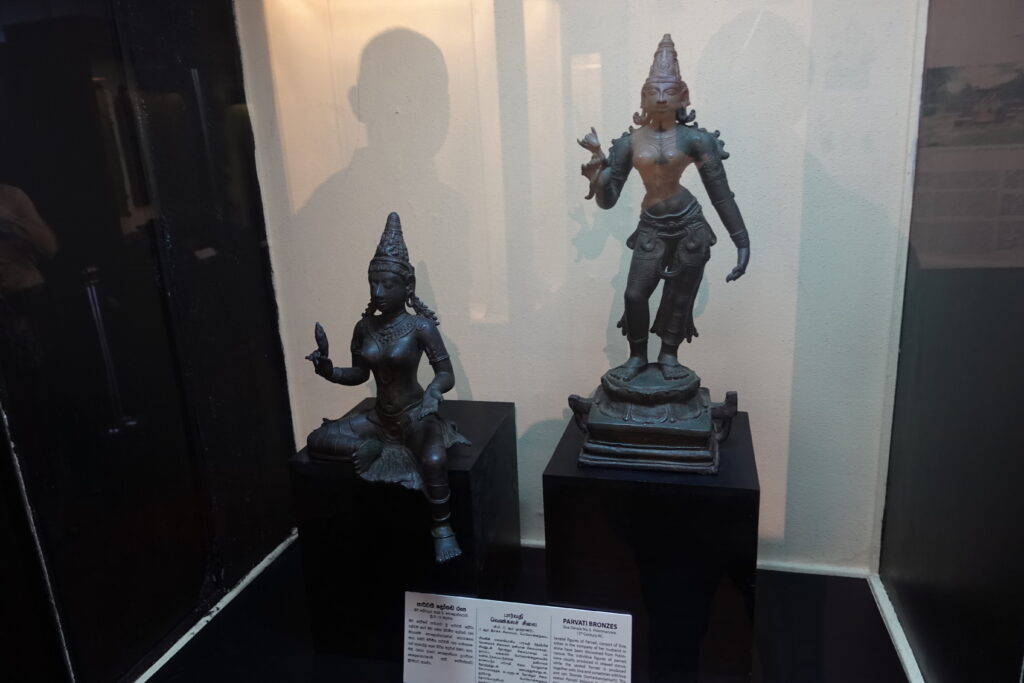
After all, the introduction of a superior culture must have raised the cultural level of Sri Lanka.
Perhaps this is similar to the relationship between China and Japan. In the past, Japan would also actively adopt advanced culture and technology from China and create a Japanese-style culture from it.
The fusion of advanced foreign and indigenous cultures creates something new and rooted in the locality.
It was with this in mind that I visited Polonnaruwa.
This place is truly amazing. It is the highlight of my visit to the Buddhist sites in Sri Lanka. I cannot miss this place when I come to Sri Lanka. The contrast with Dambulla makes Polonnaruwa more attractive. In this sense, I would like to encourage you to visit both Buddhist sites. I can assure you that it will be an interesting experience.
It's getting fun, Sri Lanka!
In the next article, I will introduce that Sigiriya Rock that always appears in Sri Lankan tourism advertisements.
*Below is an article with reference books on India and Sri Lanka that we have referenced in this travelogue. Please refer to them.
periodA list of recommended reference books to help you learn about Indian history, religion, and culture."
periodA list of recommended books for "those who want to know more about Indian Buddhism."
periodA list of recommended books to help you get to know the Buddhist country of Sri Lanka."
Next Article.
Click here to read the previous article.
Related Articles











